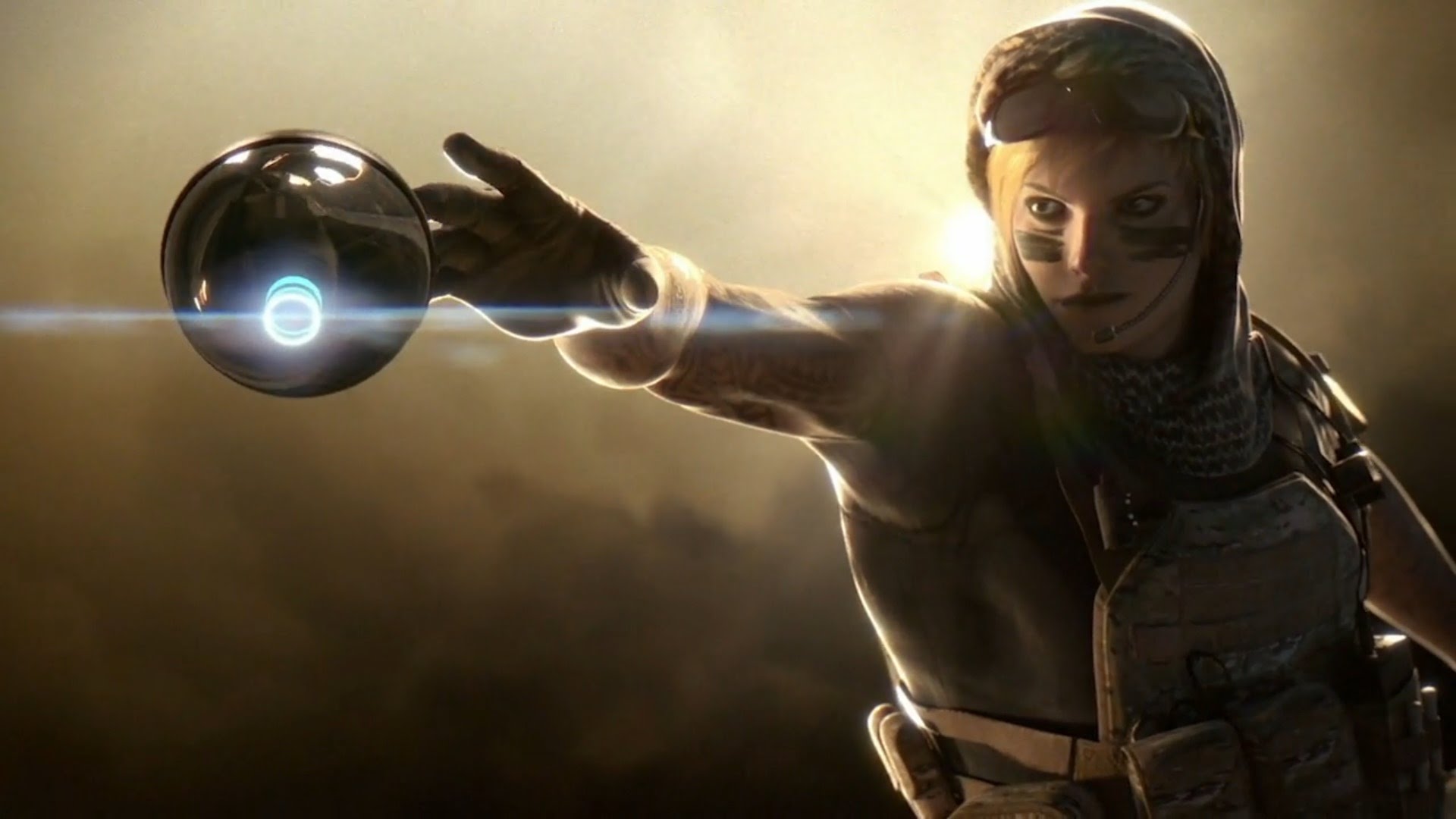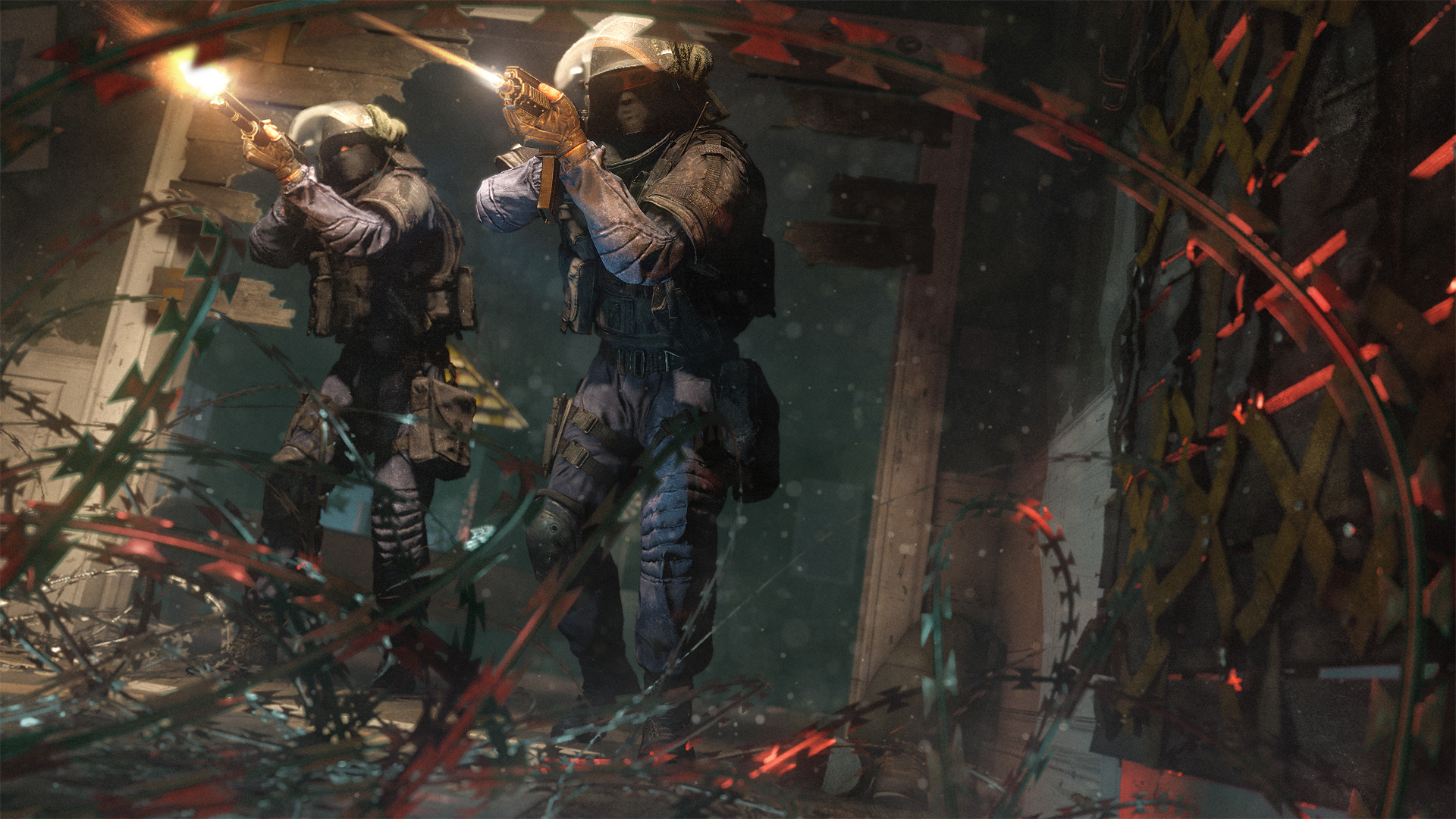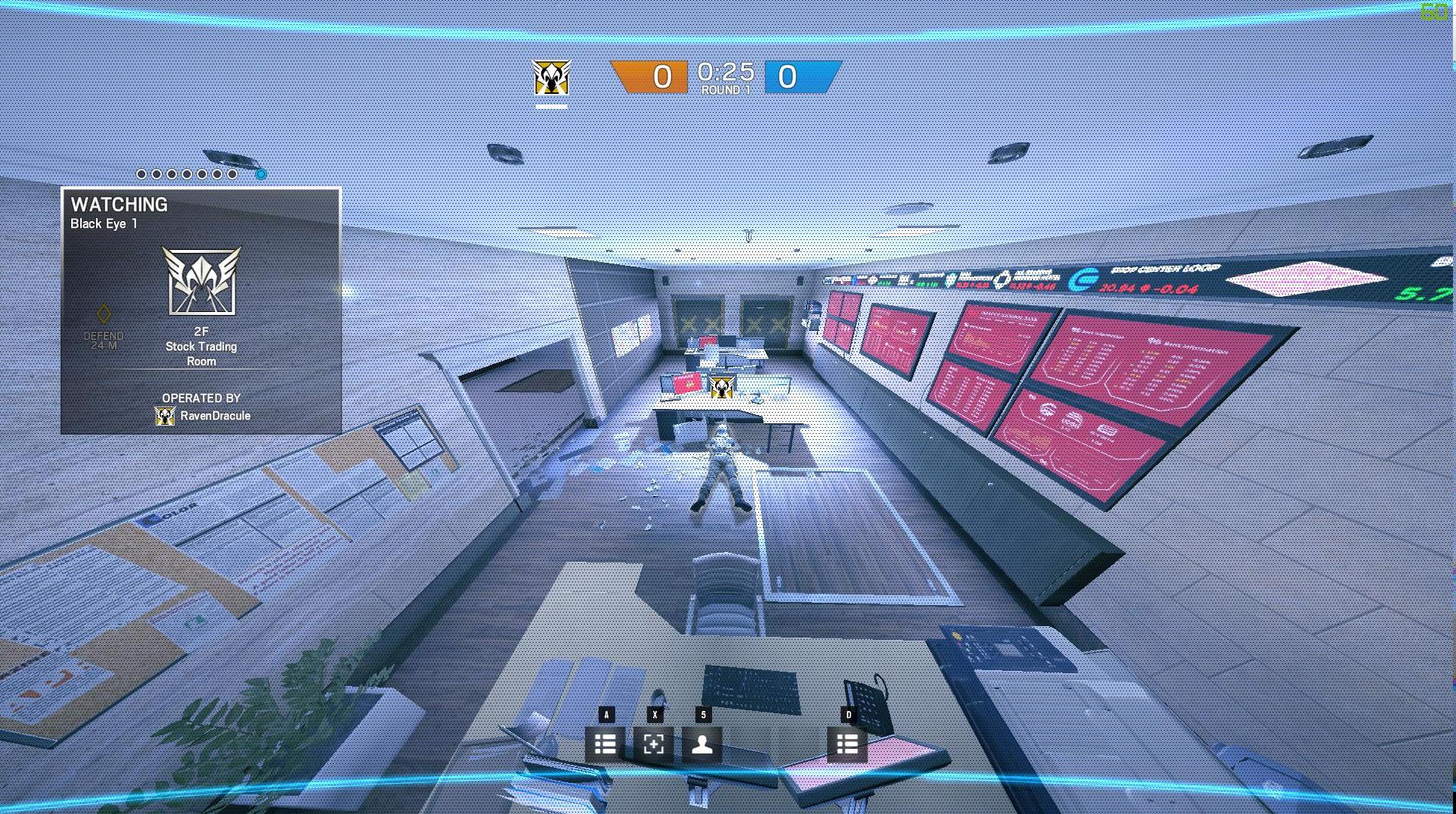Rainbow Six Siege's best operator feels like playing with wallhacks
How creativity and teamwork come together in Siege's all-seeing operator

If you're playing defense on my team during a round of Rainbow Six Siege, you might think I'm a coward. While our other teammates are engaging the enemy with extreme prejudice, you'll find me huddled under a desk looking at a smartphone. No, I'm not retweeting bork memes (I wish), I'm taking advantage of Siege's most important weapon: information. When I play Valkyrie, one of the defensive operators, I don't use my MPX or SPAZ-12 to win rounds, I use logic. If I'm doing my job right, I should never even have to put my finger on the trigger.
Of all the operators in Siege, Valkyrie perfectly captures what makes Ubisoft's multiplayer shooter so damn unique. Her ability to place cameras demands an impeccable awareness of every inch of every map in order to be effective, but she also requires taking advantage of one thing most multiplayer shooters lack: communication. Forget quick reflexes, Valkyrie needs me to be calm and clever.

Operators like Valkyrie highlight how tense the moments where nothing is happening can be in Siege. Sean loves those moments, and not because they let him catch his breath in between the firefights.
The opening moments of a round on the defensive team are intense but especially when playing Valkyrie. While characters like Kapkan run around laying traps or reinforcing walls, I'm mentally mapping lines of sight and strategizing. Valkyrie's secret weapon are three 'Black Eye' sticky cameras that she can throw anywhere. These security cameras supplement the map's static cameras, which any seasoned Siege player knows the position of as well as they know where their nearest grocery store is. Valkyrie's Black Eyes have a much wider range of sight and their spherical profile can make them inconspicuous. But knowing where to put them is well over half the battle.
For any operator, understanding the layout of maps is important, but that's doubly so for Valkyrie. She has one of the most demanding preparation phases of any defensive operator. The moment the clock starts, I need to immediately identify which room the objective is in and quickly map out the most likely route the attackers will take to reach it.
Things get even more complicated when I take into account which walls can be destroyed to create new pathways. From there, I need to establish which security cameras are nearby and what blind spots I need to fill. My objective is to ensure that I have an eye on every area where a potential engagement could take place. If an enemy moves unseen, I've failed my team.
Maps in multiplayer FPSes are designed to give you a sense of the layout without needing to necessarily study up. They create strict pathways that funnel players towards conflict. Maps in Siege are different. They are complicated networks of rooms across multiple floors with windows and destructible walls that can turn a tight corridor into a wide open space. When god closes a door, Thermite blows open a wall.
That makes Valkyrie's cameras all the more important, as they need to be placed to compensate for the way attackers will change the layout of a building. Having a camera in a dead-end corridor or with overlapping lines of sight with other cameras is a massive waste of Valkyrie's potential. That's why websites like R6maps.com can be so handy. When I play Valkyrie, I keep that site open on my second monitor so I can quickly glance over when I spawn and save myself precious seconds getting my bearings.
The biggest gaming news, reviews and hardware deals
Keep up to date with the most important stories and the best deals, as picked by the PC Gamer team.
Once the round begins, you'll find me hiding under a table frantically flipping through the dozen camera feeds trying to figure out which of the random spawn points the attackers started at and which route they're taking to the objective. Once I've established that, I need to reassess my camera placement to make sure I don't have cameras covering sections of the map that will be unused. If I do, I need to consider risking my life to place them somewhere else.
Within a minute of the round starting, Valkyrie already feels like one of the most demanding operators to play. Her responsibilities to the team are almost overwhelming. But then there's that beautiful moment when I spot the enemy team moving for a daring flank, which I alert my team to, and all that effort pays off. In an instant, I know what operators the attacking team is playing as and what their plan is. With a quick warning, my entire team can adapt and prepare.

Part of what makes Valkyrie so rewarding is I have to use a microphone. Rainbow Six is much more team-oriented than, say, Battlefield 1, but most operators work just fine without communicating. That's not the case when you're playing Valkyrie. While cameras offer a distinct advantage over the enemy, they also have a glaring weakness: You can mark an enemy's location for your team to see, but doing so alerts them that they've been spotted. If they're smart, they'll find the camera and shoot it.
While novice players might be content to sacrifice cameras for a few moments of insight into the enemy's position, they are far more effective when you don't use them to mark the enemy at all. I can communicate their position verbally instead. Skilled players will still preemptively shoot security cameras they see, but careful positioning of Valkyrie's Black Eyes can compensate for lost cameras.
When everything comes together—cameras perfectly placed and a team willing to listen—playing Valkyrie feels god-like.
But it's not good enough to just tell your team when an enemy is approaching, you need to give as much relevant information as concisely as possible. That means telling them which door to watch in relation to their position and bearings. It means knowing the specific names of every room on a map but also being able to identify that room if your teammate doesn't have those same names memorized. It means providing exact instructions like which direction they're coming from and what stance they're in. With a capable Valkyrie chirping in your ear, it feels like playing with a wall-hack. More than once I've managed to help an ally score a blind kill through a wall just by providing them exact details of where the enemy is on the other side.
Even death can't stop me. While losing an operator hurts, I can still access cameras after death and call targets. A clutch one-versus-one finale can end in disappointing defeat for the enemy when I'm feeding valuable intel to our one surviving teammate the entire time. Players no longer have to flinch at every noise they hear, worried that someone is about to get the drop on them. With a talkative Valkyrie guiding them, they become an appendage—an extension of my omnipresent sight. When everything comes together—cameras perfectly placed and a team willing to listen—playing Valkyrie feels god-like. Doing all of this without having to even raise my gun only strengthens that feeling.
Valkyrie isn't the most original operator in Siege, but she is the most interesting. With Kapkan's or Frost's traps, for example, you just hope the enemy doesn't look down. But Valkyrie's potential is limited only by my own creativity and critical thinking. She adds immense value to the team when played well. Despite having such a profound impact, Valkyrie shouldn't be found on the frontlines. She'll be found hiding under a desk. I might not score the most points but that feels a trivial anyway. In Rainbow Six Siege, worth isn't measured in kills.
With over 7 years of experience with in-depth feature reporting, Steven's mission is to chronicle the fascinating ways that games intersect our lives. Whether it's colossal in-game wars in an MMO, or long-haul truckers who turn to games to protect them from the loneliness of the open road, Steven tries to unearth PC gaming's greatest untold stories. His love of PC gaming started extremely early. Without money to spend, he spent an entire day watching the progress bar on a 25mb download of the Heroes of Might and Magic 2 demo that he then played for at least a hundred hours. It was a good demo.


